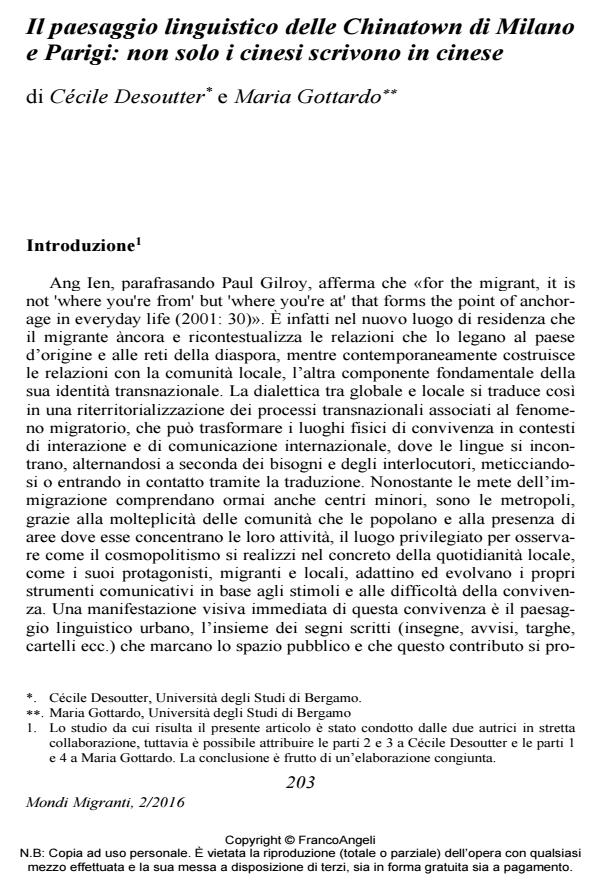The linguistic landscape of the Milan and Paris Chinatowns: not only the Chinese write in Chinese
Journal title MONDI MIGRANTI
Author/s Cécile Desoutter, Maria Gottardo
Publishing Year 2016 Issue 2016/2
Language Italian Pages 20 P. 203-222 File size 319 KB
DOI 10.3280/MM2016-002010
DOI is like a bar code for intellectual property: to have more infomation
click here
Below, you can see the article first page
If you want to buy this article in PDF format, you can do it, following the instructions to buy download credits

FrancoAngeli is member of Publishers International Linking Association, Inc (PILA), a not-for-profit association which run the CrossRef service enabling links to and from online scholarly content.
The purpose of this study is to detect, in the urban linguistic landscape, evidence of the evolution of the relationship between two communities and their gradually getting closer. Through the analysis of shop signs, posters, notices, display panels present in Paris and Milan Chinatowns, the authors first analyze an aspect so far not much investigated by the scientific literature: the signs in Chinese produced by French or Italian people. Secondly, the research takes into account the signs produced by the Chinese community, highlighting the evolution towards an adaptation to local communicative characteristics. The study is based on two corpora, one consisting of signs, the other of interviews.
Keywords: Linguistic landscape, urban sociolinguistics, Milan and Paris Chinatowns, Chinese language
Cécile Desoutter, Maria Gottardo, Il paesaggio linguistico delle Chinatown di Milano e Parigi: non solo i cinesi scrivono in cinese in "MONDI MIGRANTI" 2/2016, pp 203-222, DOI: 10.3280/MM2016-002010